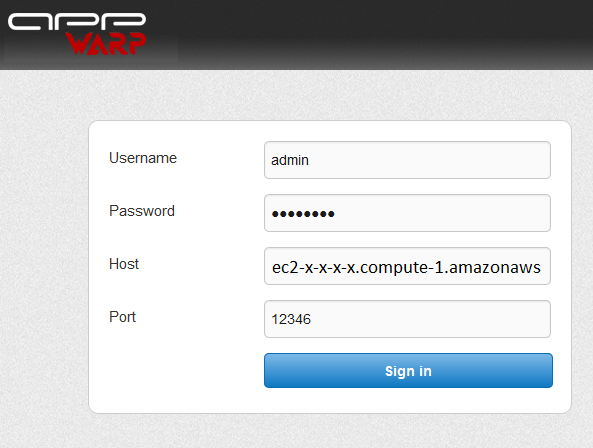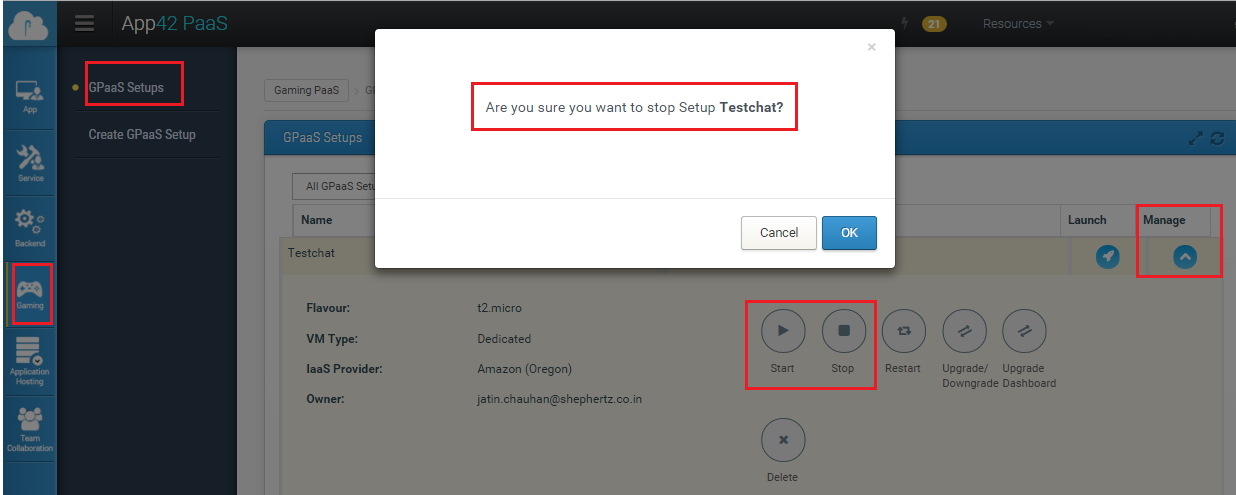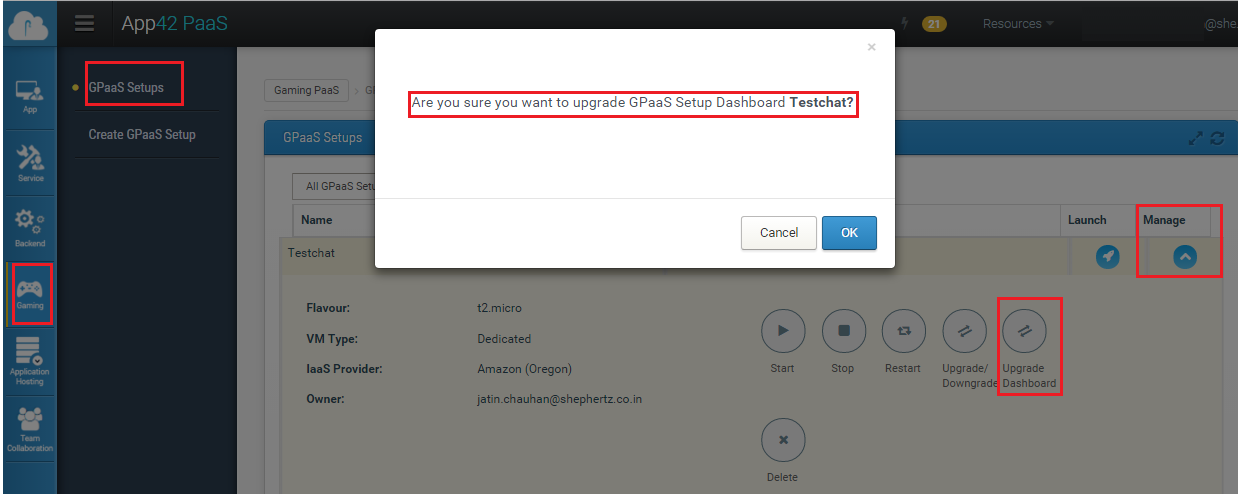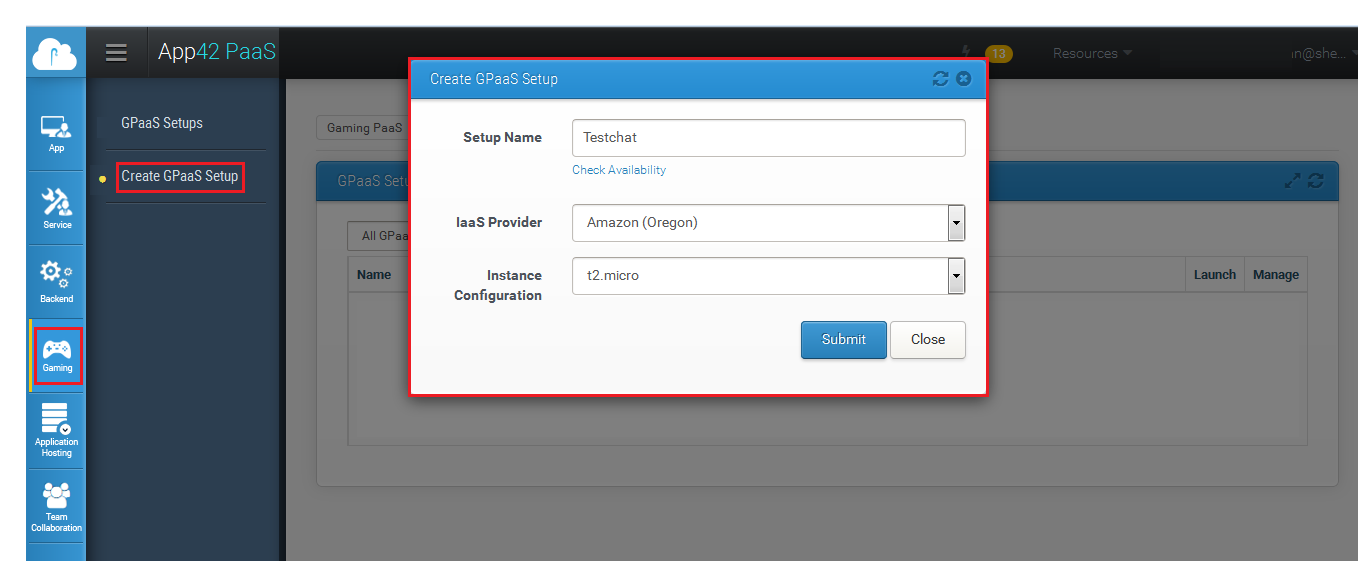GPaaS
Introduction to GPaaS
Once setup, you can update your AppWarpS2 application code anytime on your GPaaS VM just like you do with any App42 PaaS application i.e. via your GIT repository or by uploading the sources directly from your computer. With this offering, you can develop and deploy your multiplayer games using Shephertz products.
How GPaaS features help
GPaaS VMs with the above software already installed and setup.
AppWarpS2 requires the host machine to have the following TCP and UDP ports to be opened. These are which you game clients connect to for exchanging messages with the server application. GPaaS VM instances are pre-configured with the following required ports opened.
AppWarpS2 also comes with a HTML5 dashboard that can be used to monitor your running application. While this doesn’t required to be hosted on the same machine as your game server, GPaaS VM comes ready with it hosted on:
$ app42 addKeys ================= Enter your App42PaaS keys ================== API Key = your_api_key Secret Key = your_secret_key Adding keys...done
$ app42 setupGPaaS Enter Setup Name: testChat Checking Setup Name Availability... OK 1: Amazon (Oregon) Select IaaS Provider [Amazon (Oregon)]: 1: t1.micro 2: m1.small Select Instance Configuration [t1.micro]: 1 Do you want to add Static IP? [Yn]: n Setting up the GPaaS infrastructure... OK Operation is in progress, Please wait...| GPaaS setup has been completed successfully, For details, Login to PaaSHQ console.
$ app42 gpaasSetups +-----------------------+--------------------------------------------+------------+-----------------+------------+----------------------+------------+---------------+--------------+ | === GPaaS Setup List === | +-----------------------+--------------------------------------------+------------+-----------------+------------+----------------------+------------+---------------+--------------+ | Created On | App Url | Setup Name | Iaas Provider | Setup Type | Email | Vm Type | Setup Flavour | Setup Status | +-----------------------+--------------------------------------------+------------+-----------------+------------+----------------------+------------+---------------+--------------+ | 2013-11-09 04:25:10.0 | http://ec2-x-x-x-x.compute-1.amazonaws.com | testChat | Amazon (Oregon) | GPaaS | admin@shephertz.com | Dedicated | t1.micro | RUNNING | +-----------------------+--------------------------------------------+------------+-----------------+------------+----------------------+------------+---------------+--------------+
$app42 gpaasSetupInfo Enter Setup Name: cloudapi +-----------------------+--------------------------------------------+------------+-----------------+------------+---------+---------------+--------------+ | === GPaaS Details === | +-----------------------+-----------------------------------------+------------+-----------------+------------+------------+---------------+--------------+ | Created On | App Url | Setup Name | Iaas Provider | Setup Type | Vm Type | Setup Flavour | Setup Status | +-----------------------+---------------------------------------- +------------+-----------------+------------+------------+---------------+--------------+ | 2013-11-09 04:25:10.0 | http://ec2-x-x-x-x.compute-1.amazonaws.com | testChat | Amazon (Oregon) | GPaaS | Dedicated | t1.micro | RUNNING | +-----------------------+-----------------------------------------+------------+-----------------+------------+------------+---------------+--------------+

Now to deploy your own application on your GPaaS VM, you have the option of either uploading your code from your computer or we can fetch it from your GIT repo. In both the cases, you need to follow a directory structure described below.
Application directory structure requirement
Ensure that your application is developed according to the following top level folder structure if you are going to be building and running using the provided ANT script.
./src
./libs
./AppConfig.json
./warp.xmlThe libs folder contains the library files(jar) that will be used by the server application. These include among other JARs the AppWarpS2.jar file.
AppConfig.json file contains the server configuration variables which are
"TickTime" : "500" (Timer Event in milliseconds)
"LogLevel" : "WARN" (ALL, DEBUG, FATAL, ERROR, INFO, WARN, OFF, TRACE)
"AdminUsername" : "admin" (Admin UserName)
"AdminPassword" : "password" (Admin Password)
"HSQLDBFile" : "HSQLDBFile" (path for HSQLDB files by default files will be created in running directory)
"LICENSE_KEY" : "x45-tp0987-1276" (your AppWarp S2 license key)warp.xml file contains the ant script which is used to build and run server.
For example in the given SpaceWarFare sample application, the java src classes are declared in the package “spacewarfare”. You should edit this file according to your package name by editing the following line in the warp.xml file.
Deploying AppWarpS2 Application on App42 PaaS
Starting/Stopping GPaaS on App42 PaaS
-
You can simply click on “Manage” in GPaaS setups. Under Manage, click on the “Start/Stop” icon of your App42WarpS2 application. This will only “Start/Stop” your application.

Upgrade GPaaS Dashboard





















